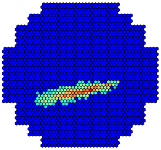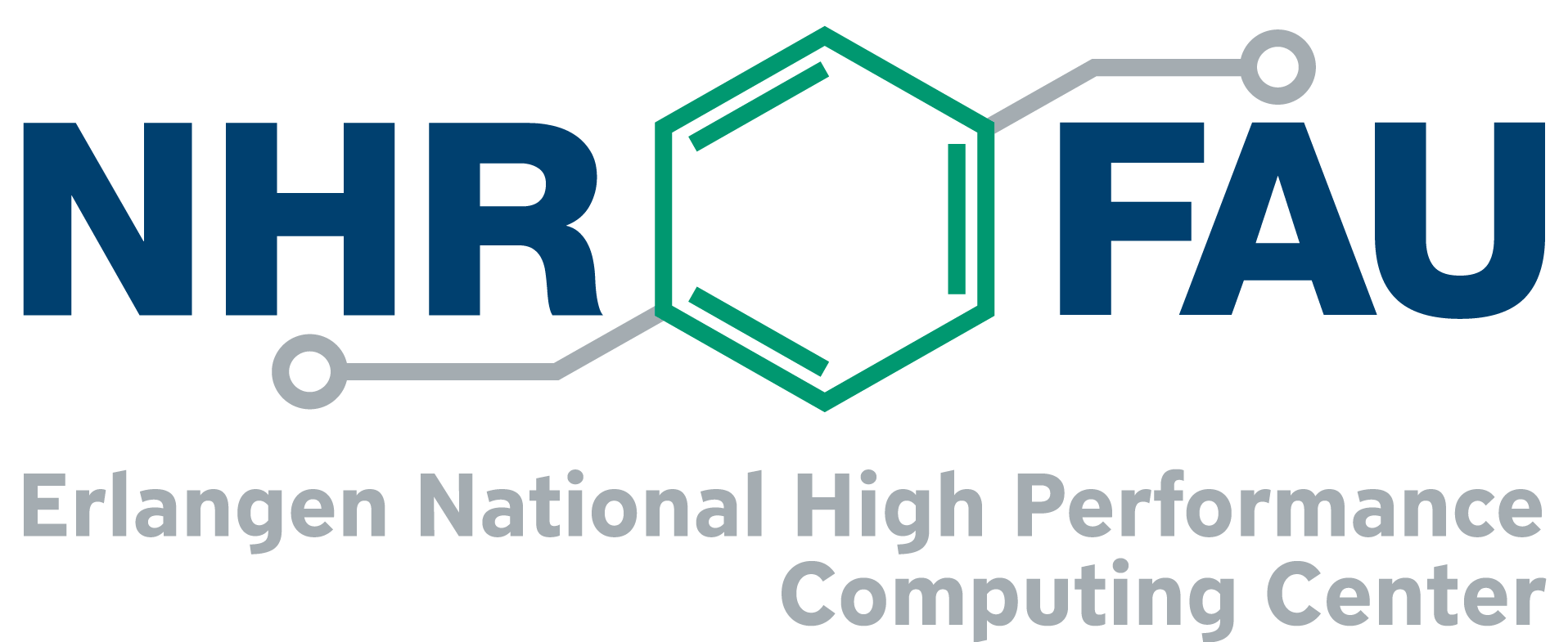HPC User Report from D. Jankowsky (High-Energy Astrophysics)
Simulations of high energy particle showers
Working with Imaging Atmospheric Cherenkov Telescopes to detect very-high energy gamma-rays requires a good understanding of physical and instrumental effects. Therefore, simulations of particle showers, initiated by these gamma-rays, and the instrument response are needed.
Motivation and problem definition
Advancing to the realm of very-high energy astrophysics, way beyond any thermal process, comes with many difficulties and the need of new detection techniques. One way to detect and analyze a special kind of particles, namely very-high energy gamma-rays, is to use so called Imaging Atmospheric Cherenkov Telescopes, like H.E.S.S., the experiment we are part of. The basic idea of a such telescope is to utilize the fact that high energetic gamma-rays don’t penetrate the atmosphere but rather develop extensive air showers in it. These showers can be used to detect and investigate the primary gamma-rays and their origin. However, this approach struggles with some uncertainties, in physical effects as well as in instrumental effects. To overcome those uncertainties, simulations of such particle showers and also the corresponding response of the instrument are needed: on the one hand to understand the physics as well as the instrument and to develop and improve our advanced reconstruction techniques and on the other hand even to reconstruct the gamma-rays since any analysis is based on the results of these simulations.
Methods and codes
 To simulate and analyze particle showers and our instrument, we basically use three different software packages. For the shower simulations the program “CORSIKA” (COsmic Ray SImulations for KAscade) is used, which is developed and maintained at the Karlsruhe Institute of Technology (KIT) and very well tested within many different experiments. For the response of our instrument H.E.S.S., we work with the software package “sim_telarray” which was developed by Konrad Bernlöhr especially to simulate Imaging Atmospheric Cherenkov Telescopes. Lastly, to analyze the simulated data (and also real data), we use software developed in our collaboration or by ourselves.
To simulate and analyze particle showers and our instrument, we basically use three different software packages. For the shower simulations the program “CORSIKA” (COsmic Ray SImulations for KAscade) is used, which is developed and maintained at the Karlsruhe Institute of Technology (KIT) and very well tested within many different experiments. For the response of our instrument H.E.S.S., we work with the software package “sim_telarray” which was developed by Konrad Bernlöhr especially to simulate Imaging Atmospheric Cherenkov Telescopes. Lastly, to analyze the simulated data (and also real data), we use software developed in our collaboration or by ourselves.
Results
The main results we obtained during the last months by using such simulations were energy spectra of other cosmic ray particles than gamma-rays, like electrons or protons which normally are background particles for the instrument. Furthermore, we develop a new analysis approach with neural networks to reconstruct gamma-rays.
Outreach
Tim Lukas Holch, Idan Shilon, Matthias Büchele, Tobias Fischer, Stefan Funk, Nils Groeger, David Jankowsky, Thomas Lohse, Ullrich Schwanke, Philipp Wagner: “Probing Convolutional Neural Networks for Event Reconstruction in γ-Ray Astronomy with Cherenkov Telescopes”, Proceedings of Science – 35th International Cosmic Ray Conference
Additionally, further theses and papers are in the pipeline using these simulations.
Researcher’s Bio and Affiliation
David Jankowsky studied physics at the Friedrich-Alexander-Universität Erlangen-Nürnberg and received its masters’s degree in 2015. Currently he is working as a PhD student in the group of Prof. Dr. Stefan Funk in the field of high-energy astrophysics.
